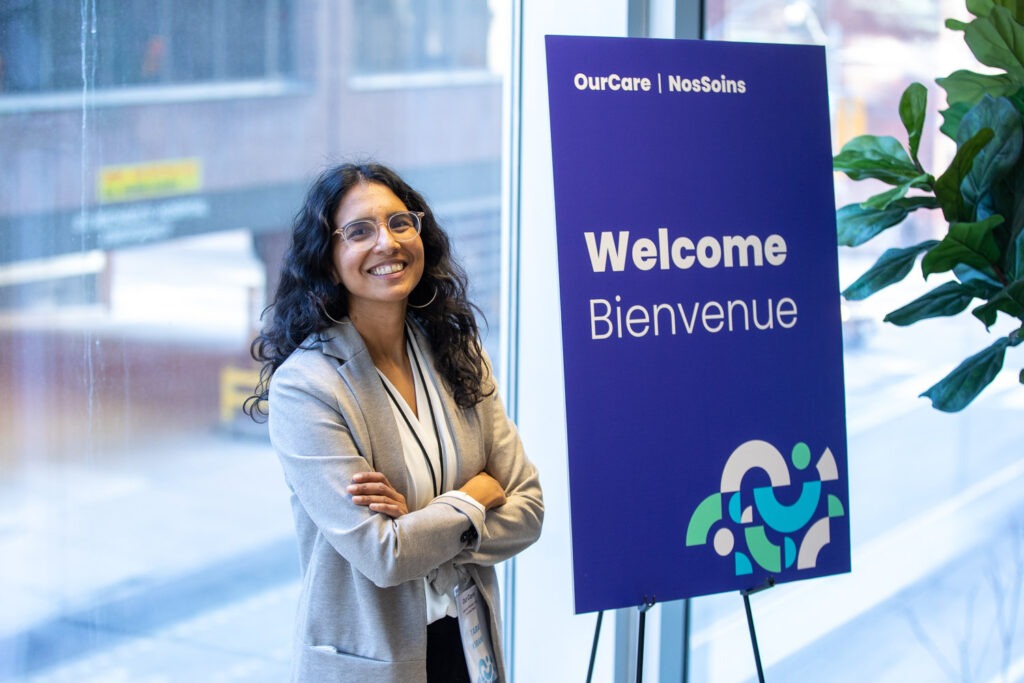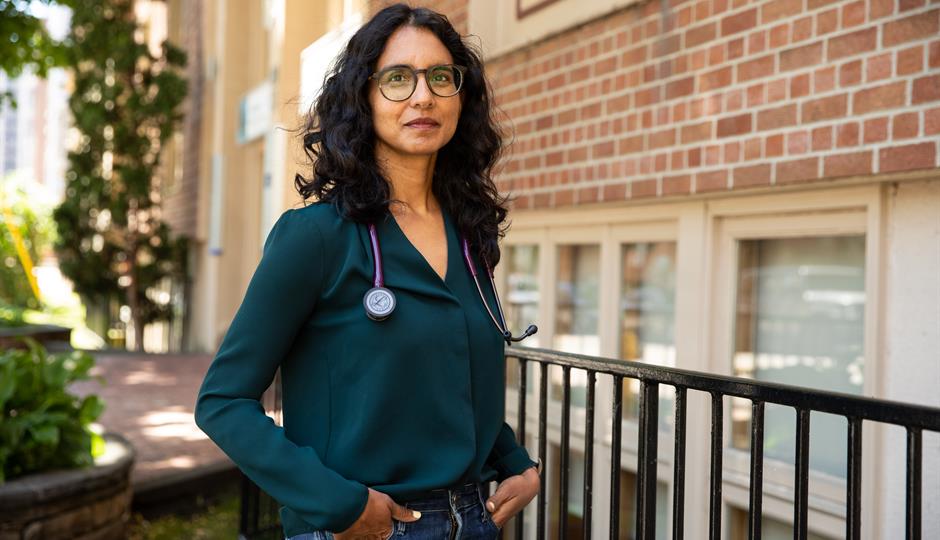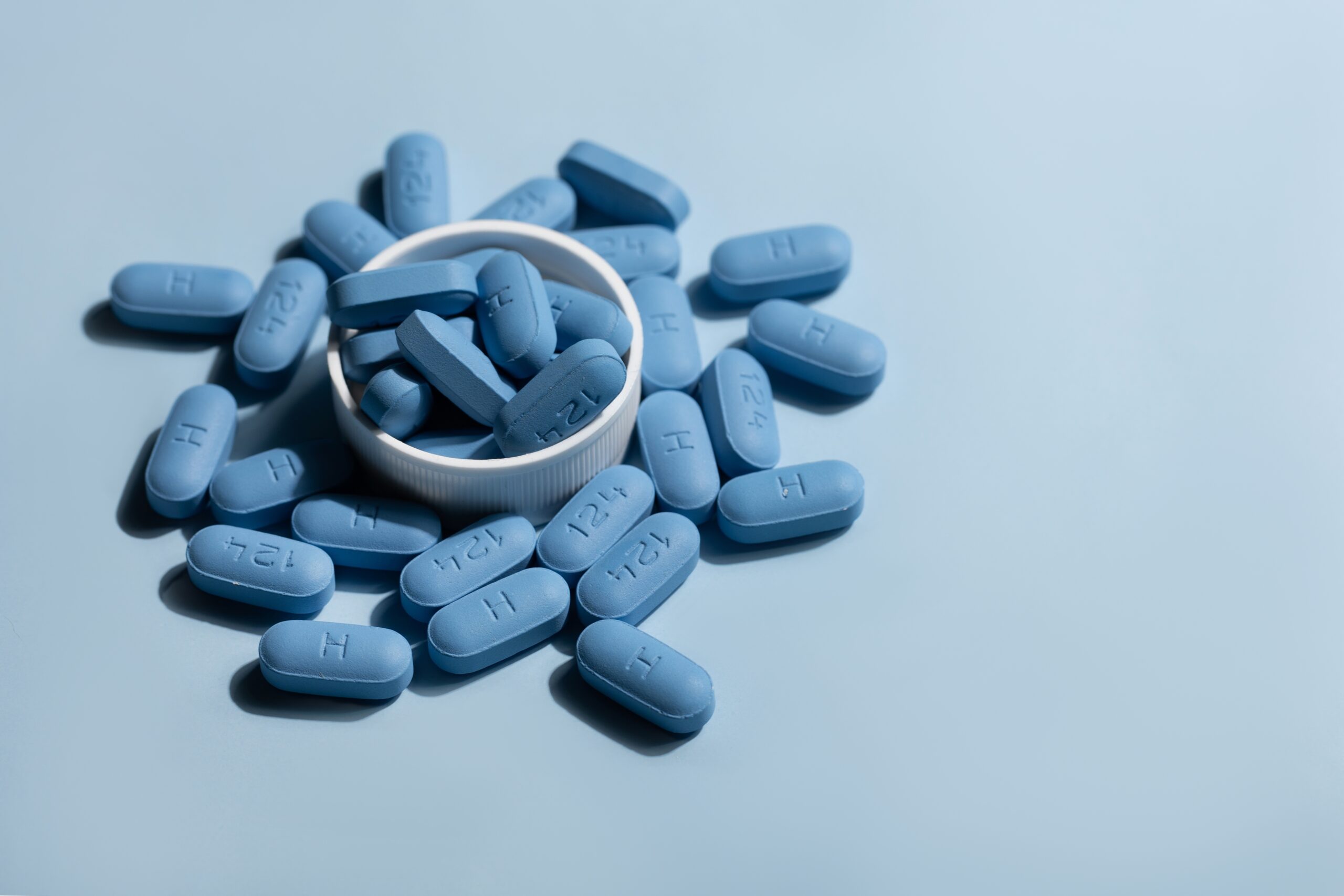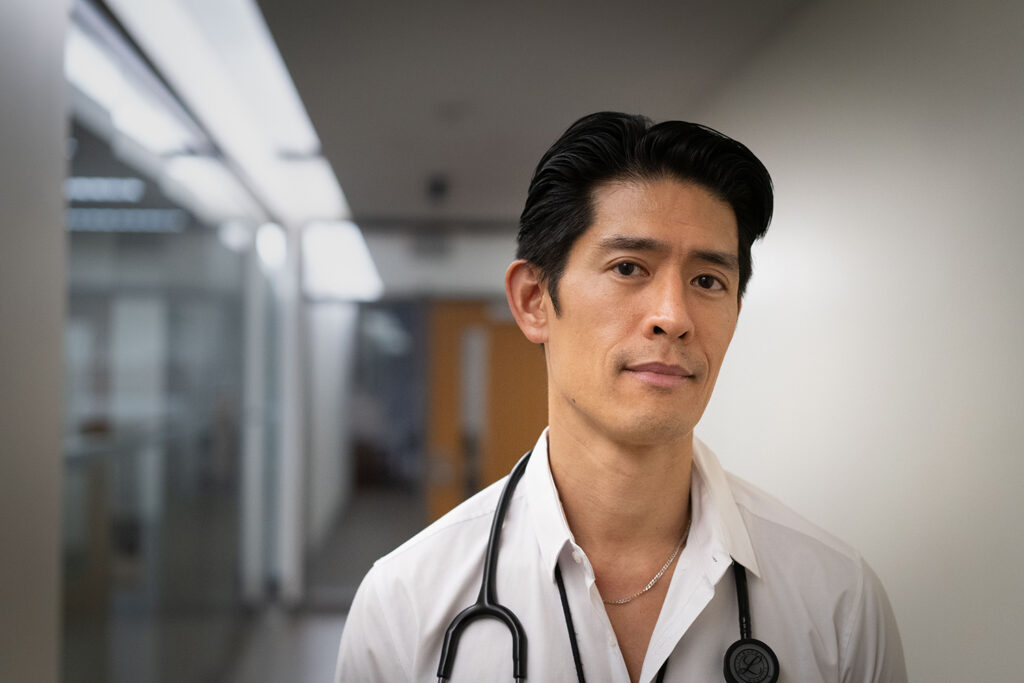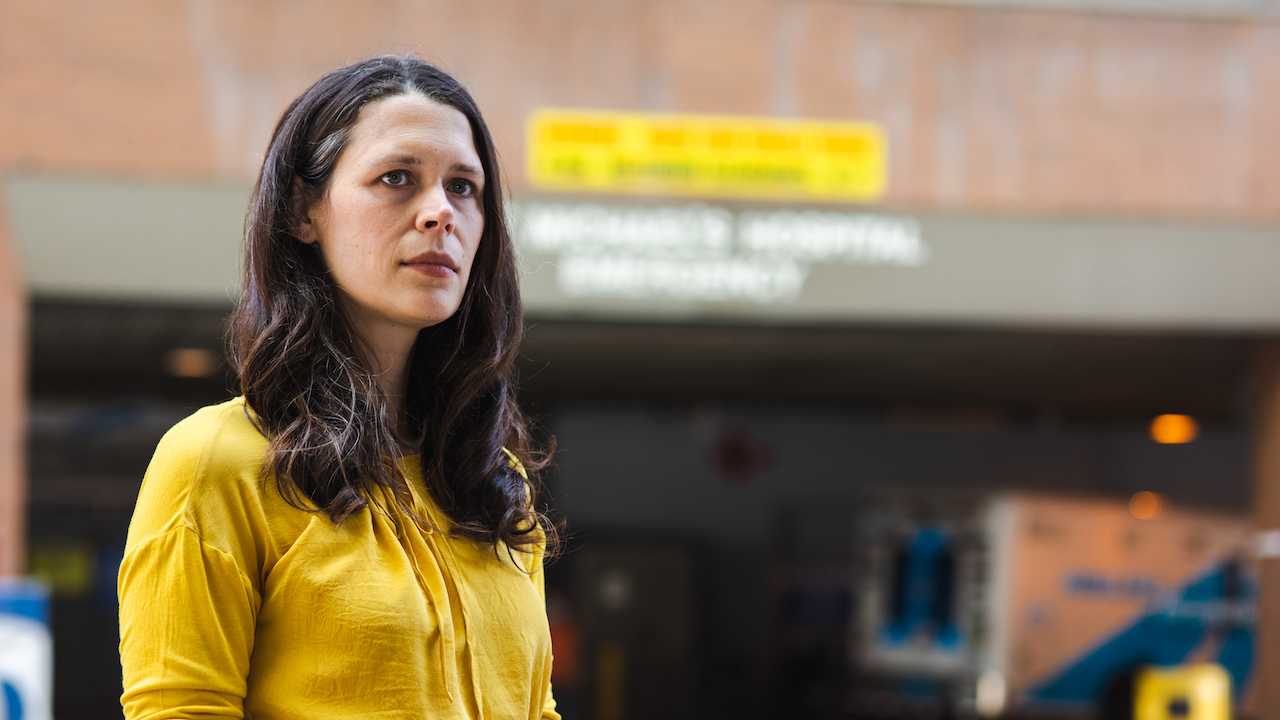What does the Housing First program reveal about ending homelessness in Canada— and what challenges remain? In this podcast, MAP scientist and director Dr. Stephen Hwang joins a panel of experts to explore how the Housing First program fits into the bigger picture, why long-term stability goes beyond shelter, and what comprehensive supports are needed to address the root causes of homelessness.
Author: Samira Prasad
New survey reveals access to primary care growing, but 5.9 million adults in Canada still lack regular doctor
Press release by the Canadian Medical Association
Access to primary care in Canada is slowly improving, but survey data shows that nearly 6 million adults across the country still lack access to a regular family doctor, nurse practitioner, or primary care team – down from 6.5 million since 2022.
Survey data also reveals concerning gaps in access to care that vary substantially across demographic groups, and people without a regular clinician reported discrimination when trying to access primary care.
The OurCare Survey 2025, led by St. Michael’s Hospital in partnership with the Canadian Medical Association (CMA), is published online today. The survey provides a clear picture of how Canadians’ experiences with primary care compare to the OurCare Standard — a framework of six essential elements that define what every person should expect from the primary care system. The OurCare Standard was developed in consultation with 1000s of patients and members of the public.
The survey shows that 83.5% of women have a regular clinician, compared to just 79.4% of men and only 72.7% of those identifying as another gender. Other results show that 84.9% of people earning $200,000 or more annually reported having a regular clinician compared to 69.6% of those earning less than $20,000.
People with a family doctor or nurse practitioner reported challenges accessing care. Only 37% said they could be seen the same or next day when they had an urgent concern.
“People in Canada believe everyone in this country should have access to high-quality primary care regardless of their background and where they live,” said Dr. Tara Kiran, lead investigator and scientist at St. Michael’s Hospital. “Results from our survey show we are making progress towards this goal but that we still have a far way to go. I hope results from our survey motivate governments across the country to redouble their efforts to improve access to care and for people in this country to demand better.”
The survey also reports data on access to health records, cultural safety and community accountability — elements of care that people said were important to them but are often overlooked in health system reporting. Strikingly, only 27.8% of respondents reported they were satisfied or very satisfied with how the primary care system in Canada is working.
“These findings confirm what physicians and patients across Canada are experiencing daily. While we’ve made progress, too many Canadians still face unacceptable barriers to primary care,” said Dr. Margot Burnell, CMA President. “We can do better. We know the solutions. Access to care for all Canadians is a realistic and achievable goal now. ”
Key findings from the OurCare Survey 2025 are summarized in the report “Is Canada’s Primary Care System Measuring Up? Results from the 2025 OurCare National Survey” published at OurCare.ca.
More Canadians have a family doctor, but ‘concerning gaps’ found
Dr. Tara Kiran, lead of the OurCare project, spoke to CBC about the finding’s from her latest survey that found that 5.9 million people in Canada still lack a family doctor.
“That’s still a big number, but it is a big improvement at a time when we’ve actually had some population growth,” said Dr. Kiran.
These current numbers are down from 6.5 million in 2022, a number found through the initial OurCare survey.
Nearly six million Canadians remain without a family doctor, new report finds, revealing gaps in primary care
The results of the latest OurCare Survey found that an estimated 5.9 million people in Canada are still without access to primary care.
“Access to care overall has improved in some ways,” Dr. Tara Kiran, MAP scientist and project, told the Toronto Star. “But at the same time, 5.9 million people is a lot of people without primary care. Although that number has improved, we still have a ways to go.”
More Canadians have primary care now compared with three years ago, study finds
Dr. Tara Kiran spoke with The Globe and Mail about the findings of the 2025 OurCare survey, which shows that despite there still being gaps in care, more people in Canada have access to primary care than in 2022 when the initial survey took place.
Ontario’s Drug Checking Community receives Health Canada funding for expansion
Ontario’s Drug Checking Community has received further support from Health Canada’s Substance Use and Addictions Program to extend and expand their public health services and safety program.
This will involve scaling the offsite drug checking model designed and in use by Toronto’s Drug Checking Service since 2019 to other jurisdictions in the province. The primary reason for doing so is to inform evidence-based responses to the worsening toxic drug supply crisis by educating people who use drugs, community health workers, public health units, clinicians, first responders, policy makers, coroners and toxicology laboratories, and others about what’s circulating in the unregulated drug supply and anticipated harms.
The goal by December 2027 is to establish a collection site at a community agency in each of Ontario’s public health unit jurisdictions, for access to the most accurate and timely information on their local unregulated drug supply.
Operated from within MAP Centre for Urban Health Solutions at St. Michael’s Hospital in Toronto, Ontario’s Drug Checking Community is a national leader in drug checking service delivery and community-led unregulated drug market monitoring and education. We are beyond grateful to continue to serve the community of people who use drugs and inform responses to the toxic drug supply crisis. Thank you to people who use drugs for donating their samples, our members for collecting and analyzing samples, our funders, and our supporters for your ongoing advocacy and use of our program’s findings.
New HIV prevention guidelines say doctors should not be ‘gatekeeping’ PrEP
Drs. Darrell Tan and Sean Rourke spoke with The Canadian Press about Canada’s updated HIV prevention guidelines released on World AIDS Day. The new clinical guideline published in the Canadian Medical Association Journal provides 31 recommendations and 10 good practices for prescribing antiretroviral medication before and after a potential HIV exposure to prevent infection.
Meet Dr. Darrell Tan, the physician-scientist rewriting Canadian guidelines for HIV prevention medication
Dr. Darrell Tan, MAP scientist and infectious diseases physician at St. Michael’s Hospital, is the lead author on the latest national guidelines for HIV Prevention Medication. The updated guidelines, published in the Canadian Medical Association Journal offers Canadian health care providers, community members and policy-makers the latest insights on prescribing HIV medications, in an effort to ensure the life-saving drugs are equitably prescribed and bring down rising infection rates.
The guidelines come at a critical time as research shows that HIV cases are spiking in Canada. The federal government reported 2,434 people newly diagnosed with HIV in Canada in 2023, which is a 35% increase over previous years. Marginalized communities face disproportionately higher cases, calling for more guidance and equitable prevention tools.
The Canadian Press wrote about the updates to HIV Prevention Guidelines. Read the story here
World AIDS Day, marked each year on December 1, is an opportunity to draw attention to the AIDS epidemic, and a reminder of the impact HIV and AIDS continues to have today.
We spoke with Dr. Tan about the need for the guidelines, why they’ve been released now and what populations will be affected the most.
Let’s start with your background. Can you describe your research in general at St. Michael’s?
I’m an infectious diseases physician and clinician-scientist, and my doctoral training is in clinical epidemiology. A major goal of my work is to expand the range of tools that we have available for treating and preventing sexually transmitted and blood borne infections, notably HIV – the virus that causes AIDS. My team and I do this through a number of methods like clinical trials, but we also work in the field to learn how to implement prevention tools in the real world.
My research team is called the Options Collaboratory in HIV and STI Treatment and Prevention Science (Options Lab). We work to maximize the range of medical options available to people seeking HIV and STI treatment and prevention care, because we know it’s not a one-size-fits-all solution. We’re a team with expertise in clinical science, social science, public health science, and most importantly community engagement.
Can you talk about the need for updated guidelines around Pre- and Postexposure Prophylaxis (PrEP and PEP) medications in Canada, and why these guidelines are released now?
There’s a story behind it, actually. The first clinical trials demonstrating that PrEP is a safe and effective strategy for preventing HIV infection were published in 2010. PrEP is a profound intervention, and was eventually approved by Health Canada in 2016. The hope was that we would see a rapid uptake in its use. But we were hearing from medical colleagues that they wanted guidelines for prescribing PrEP. In fact, some physicians would point to the absence of Canadian guidelines as the reason for not prescribing the medication. Prescribing PrEP was also controversial because of the stigma around HIV and AIDS, and the behaviours that lead to transmission, such as sexual activity and injection drug use.
Faced with this inaction, we took the initiative to put together Canada’s first and only national guidelines on PrEP and PEP, which were published in 2017, to show what is evidence-based, effective and standard practice for prescribing these medications. But even though those first guidelines got a lot of attention, and despite the fact that PrEP has now been around for over a decade, the incidence of HIV in Canada has worsened.
So, it was critically important to update the guidelines and focus on equity gaps in how PEP and PrEP are prescribed and accessed in Canada. This was a concern that came up with the original guidelines, and we’ve now emphasized that PEP and PrEP are tools that need to be equitably deployed to bring down HIV numbers in this country.
What populations will the new guidelines affect the most?
Efforts to contain epidemics benefit all of us, and the HIV numbers are too high in our country as a whole. PrEP in particular has been taken up the most among sexual minority men who have historically represented half of HIV infections in Canada since the dawn of the epidemic. But even in this group, the uptake hasn’t been equitable by race, urban and rural divide, or socio economic status.
We’re seeing HIV numbers rise among Indigenous people and cisgender women in Canada. Gender diverse and transgender people are also important populations who are often lumped together with sexual minority men, but each community has distinctive characteristics and we mustn’t conflate them. Another important group is people who inject drugs and use substances. This group has been under-represented in biomedical HIV prevention work.
Who was involved in creating the new guidelines?
We worked to include sex, ethno-racial, and geographic diversity within the panel of experts. Certainly there was disciplinary diversity, and we included community expertise as well. Many of the key populations that are disproportionately affected by HIV in Canada were represented in the panel, and people with lived experiences and professional experiences.
We also met with regional organizations representing different communities in Canada, like women’s groups, minority groups, and Indigenous groups to share their recommendations for the updated guidelines. I believe we made meaningful changes to the content of the guideline based on this input.
What does it mean to you that the updated guidelines are released on World AIDS Day?
This day reminds the whole world how important HIV and AIDS continues to be today. Many people have the impression that HIV is a problem of the past, but it continues to be a major public health issue all over the world, including in Canada. Paradoxically, we have worsening HIV incidence in Canada even though we have so many safe and effective tools to control the epidemic, including but not limited to PrEP and PEP. It represents an urgent need to re-double our focus and efforts.
We have excellent treatments for HIV and AIDS, and we can care for our patients living with HIV very well, but it is still an incurable condition and we must prioritize prevention.
By Christine Davidson, Unity Health Toronto
Photos by Kevin Van Paassen, Unity Health Toronto
These patients have a family doctor, but they’re hours away. The hidden health-care struggle for thousands in Ontario
In this article featured on the front page of the Toronto Star, Dr. Archna Gupta spoke about a recent study published in CMAJ that found that 13 per cent of Ontarians attached to a family doctor live more than 30 kilometres away from their physician. The study also found that these patients were more likely to use the emergency department for non-urgent reasons and to have fewer family doctor visits, and were less likely to have preventive screening for cancer.
“When we talk about the primary care crisis, we often focus on patients who don’t have a family doctor,” said said Dr. Gupta.
Canada needs to tackle escalating opioid use among young people, doctors say
A new CMAJ report is highlighting the inadequate efforts to address opioid use among adolescents in Canada, stating that existing services need to be tailored to better meet the needs of young people.
A second CMAJ report co-authored by Dr. Tara Gomes gives insight into recent opioid-prescribing trends, showing that dispensing of opioids has decreased. Dr. Gomes shared with The Globe and Mail that while this is a positive trend, the recent also showed the concerning element of some practitioners outright refusing to prescribe opioids all together.
“Opioids have a place in clinical practice, but it’s really about making sure that when they are accessed, it’s required that people have tried other alternatives, and that they’re prescribed as low dose and short a time period as possible,” Dr. Gomes said.


